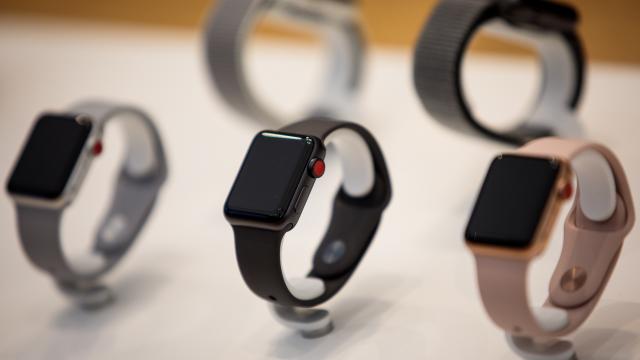Your heart beats fast when you’re exercising hard, and slower when you’re resting or sleeping. Your Apple Watch is taking your pulse all day long, and wants to tell you allllll about it.
Some major caveats on everything we’re about to say: first, everybody is different, so if your numbers are higher or lower than you’d expect, there isn’t necessarily anything wrong with you. There’s a wide range of normal.
And more importantly, your Apple Watch is a silly gadget; your heart is an important part of your body. There are conditions that could result in unusual results for the heart rate numbers we discuss. If you’re concerned that something is genuinely wrong with you, stop googling heart rate stats and talk with an actual health professional.
So. here’s what you can learn from the heart rate features:
Current Heart Rate
This is just what it sounds like: how fast your heart is currently beating, in beats per minute. If you’re at rest, the watch only measures occasionally. That’s why your watch face may say “70 bpm, 9 min ago.” But when you open the heart rate app, it takes a fresh reading.
The heart rate sensor can only detect readings between 30 and 210 beats per minute. That’s more than enough for most of us, but if you can tell you’re near the limit (you’re a young person who sees some 210’s while exercising, for example), the watch might be missing some of your highest or lowest readings.
What’s normal? Normal depends on what you’re doing when you take the reading. If you’re lying in bed, expect numbers similar to your resting heart rate. If you’re exercising, we discuss that below as well. If you must have a number, and you’re just sitting around not doing anything special, 60 to 100 is typical.
Resting Heart Rate
This is your heart rate while resting. Your heart rate tends to be lowest while you sleep, so if you wear the watch at night, you may get a lower resting heart rate than if you only wear it during the day.
The more athletic you are, the stronger your heart will be. A strong heart doesn’t need to beat very many times per minute to keep your body full of fresh blood. Really fit people tend to see lower numbers here than people who don’t work out. And as you get more fit, you may see your resting heart rate drop over time.
On the flip side, if your resting heart rate is increasing, something may be wrong. You might be overtraining (exercising so much you’re feeling burned out) or you could be sick or stressed.
What’s normal? This number should be a bit lower than what you’d see while you’re up and walking around”maybe 60 to 80 beats per minute for most of us, lower if you’re really fit.
Walking Average
This is the heart rate the watch detects (averaged over the course of the day) when you’re walking around.
What’s normal? This number will be more than your resting heart rate, but not super high. Mine is usually in the 70s or 80s, but those are mostly trips from my desk to the fridge. If you do a lot of brisk walking, 110 to 120 might be more typical.
Workout Heart Rate
Your heart beats harder as you work out, so this number is a proxy for how hard you worked. I like to look at the graph of heart rate to see how my effort level changed over the course of the workout. If you run intervals, for example, you can see your heart rate go up with each interval and down during the rest periods in between.
If you wear the watch during a few really intense workouts, the highest number you see is likely to be your true max heart rate (or very close to it). Once you know that, you can calculate your exercise efforts as a percentage of your maximum. (On iPhone, the app Zones can do this calculation for you and colour-code your workouts by effort level.)
What’s normal? These numbers will be higher than your resting or walking heart rate if you’re doing cardio exercise like running or cycling. If you’re lifting weights or doing yoga, all bets are off; some workouts might raise your heart rate a lot and others might not. Anything up to and including your maximum heart rate is normal. (Maximum for most of us is anywhere between 160 and 200+)
Heart Rate Recovery
This is a special measurement the watch takes after you finish a workout. To get the best numbers here, make sure to end your workout on the watch right when you end it in real life.
It takes a measurement one minute after the workout ends, and then another at two minutes. The result is a pair of numbers that tell you how many beats per minute your heart rate decreased after working out. So if you were sprinting at 180 bpm, and then a minute later your heart rate was 160, that’s a 20 bpm drop.
The faster your heart rate returns to normal after exercise, the better. More fit people will have larger decreases here, for example 30 instead of 20.
What’s normal? About a 20 beat decrease per minute is normal. Less than a 12 beat decrease could be reason for concern, but again, that’s a question for your doctor.

Comments